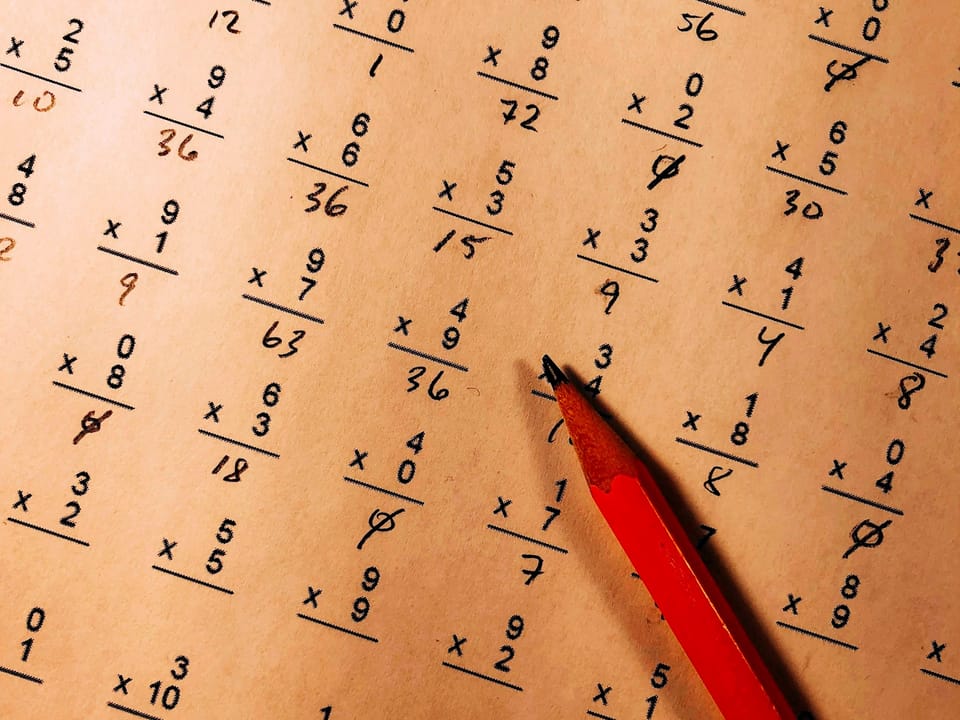Dumb History of Numbers

Several anthropological studies suggest that mathematics was not always as difficult as it is today. Some terribly drawn cave paintings even depict students emerging out of their math classes shouting, “What a day! What a beautiful day!” Or something like that. Those cave paintings were quite difficult to interpret, even for art connoisseurs like myself, who can spell “connoisseur” to perfection.
The origins of Mathematics began modestly enough- to solve practical problems like counting fruits and nepotistic problems like dividing inheritance. But then it got carried away. Certain Australian Aboriginal tribes counted only up to two numbers: “one” and “many”. They were fine with it. South American Indians made it to six, while South African Bushmen made it all the way to ten. They were more than fine with it. Because even baa baa black sheep ever had at most three bags of wool.
For larger quantities, our forebears turned to shells and pebbles. Ancient shepherds moved pebbles from one pile to another, as his sheep shuffled through a narrow passage. Apart from keeping a count, counting sheep helped lull many insomniac shepherds to sleep than any lullaby ever sung. Devoid of human company for weeks at a time, they did the most boring thing anyone could do: count sheep repeatedly until they felt drowsy. Math is boring, hence proved.
From there, numbers grew unchecked like weed. Maths found itself in an existential crisis as mathematicians just couldn’t keep up with the demand for new symbols as they began counting higher and higher. Creating a new symbol for every new number proved to be extremely unsustainable. Further, Multiplying or dividing those unique numbers was readily impossible. The bravest of Roman Centurions, bless their imperialistic hearts, would stay away from multiplying those numerals. Then came zero, fashionably late. One brave Indian astronomer, Aryabhatta, solved this zero-dollar problem in arithmetic and gave this emptiness a name - “kha”; Brahmagupta assigned a symbol for zero as we now know it and established rules for its use; Medieval Arabs spread it far and wide. Suddenly, students everywhere began getting perfect zeros in their math exams.
Nevertheless, this placeholder system allowed for the recycling and reuse of the same unique symbols. The Babylonians, in their infinite wisdom, used base-60 for their numbering because even the most fashionable Babylonians had no more than 60 outfits in their closet. However, eventually we settled on base-10 to support grown-ups who still counted numbers with their fingers. With this, all students had to learn were ten unique symbols, they were set to infinity. Maths was finally made easy, or so they thought.
Negative Numbers
“For every positive number, there is an equal and opposite negative number” - Maybe Newton
Negative numbers had to be invented when humanity realized their gift of spending more than they had. The Chinese marked the positive numbers in red and the negative numbers in black on their counting rods. Brahmagupta created rules for how positive numbers could interact with negative numbers. With that, the number system had neither head nor tail; it could go on forever in either direction. However, for another thousand years, Europeans pretended like negative numbers aren’t real, calling them absurd, meaningless and philosophically problematic. French mathematician François Viète outright refused to accept them, famously saying, “I will never admit that a number less than zero exists.” This discrimination finally ended when Issac Newton, who didn’t care much for philosophical debates, used negative numbers extensively to solve real-world problems in calculus and the laws of motion.
After that, there was no looking back. Negative numbers play a pivotal role in finance, accounting and human misery. Try imagining imaginary numbers without negative numbers. Now try imagining mathematical dread without imaginary numbers.
Irrational Numbers
There are numbers we can count with our hands and then there are others that stretch forever without any predictable pattern, like the life of pi. These irrational numbers shook the mathematical world to its core. Particularly, it shook a math geek called Pythagoras and his religious-mathematical cult that worshipped numbers. Pythagoras represented a controversial figure not just because of the troubles his theorem had created for children worldwide, but because he did not come up with it in the first place. Pythagoras' theorem was solved many times by many Babylonians and Indians before him. His math cult was not too fanatic about facts, looks like.
Anywho, Pythagoras believed in the absoluteness of numbers. "All is number" he’d often say. They accepted every number as long as it’s a whole number or it’s a ratio of two whole numbers. So he could never accept the existence of irrational numbers. When one of his disciples, Hippasus, proved that the square root of 2 is an irrational number, the response of the other Pythagoreans was less than scholarly. Hippasus was either thrown overboard a ship by fellow pythagoreans into the sea, or the gods, outraged by his assault on mathematical purity, scuttled his boat in the high seas. Well, he certainly made some waves with his discovery. Historical reports are not very clear on whether it’s a ship or a boat. But one thing is clear: he’s dead for sure, by now.
Today we take pride that we welcomed these misfits, no matter how irrational they are, into our number system. Except for 13, even though it’s still in its prime. It’s a bit odd, I agree.
It’s okay if we skip a number or two, we have a lot of them anyway. However, as if we don’t have enough, a select few believe that we need a few more numbers to make sense of the universe. Even Heisenberg who came up with the uncertainty principle is quite certain that our numbers may be too rigid and too slow to measure the properties of subatomic particles. At a quantum level, we can measure either the position or speed of a particle, but not both at the same time. This is not because we are bad at math, but because there is still a lot of math that we don’t understand. So Quantum computing was built with qubits instead of traditional bits that are strictly 0 or 1. Qubits can exist in a superposition of both 0 and 1 at the same time.
Quantum mechanics was invented when Scrodinger’s cat ate my maths homework and asked a lot of silly questions. What if it’s not just 0 or 1? What if it’s both, neither, or somewhere in between? What if maths is not difficult enough as it is?
We are just overthinking it all, if you ask me. Maybe the answer to everything from life to universe is really just 42.
If you like this post, please consider subscribing to this blog. It costs nothing. If you super duper like it, consider sharing it with your friends.



Comments ()